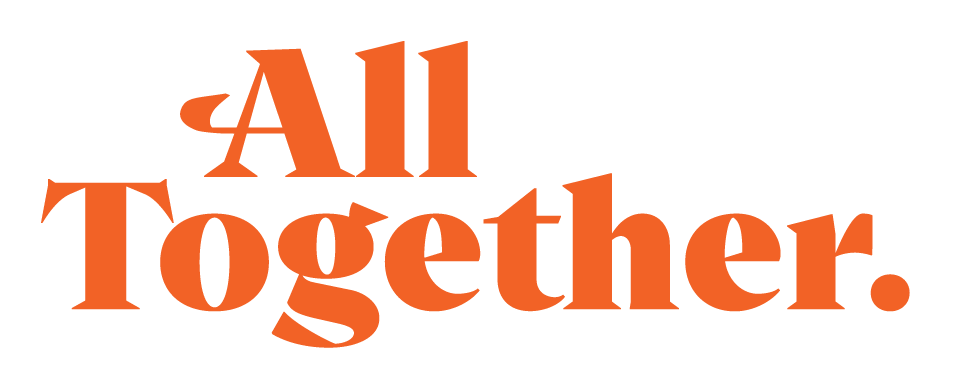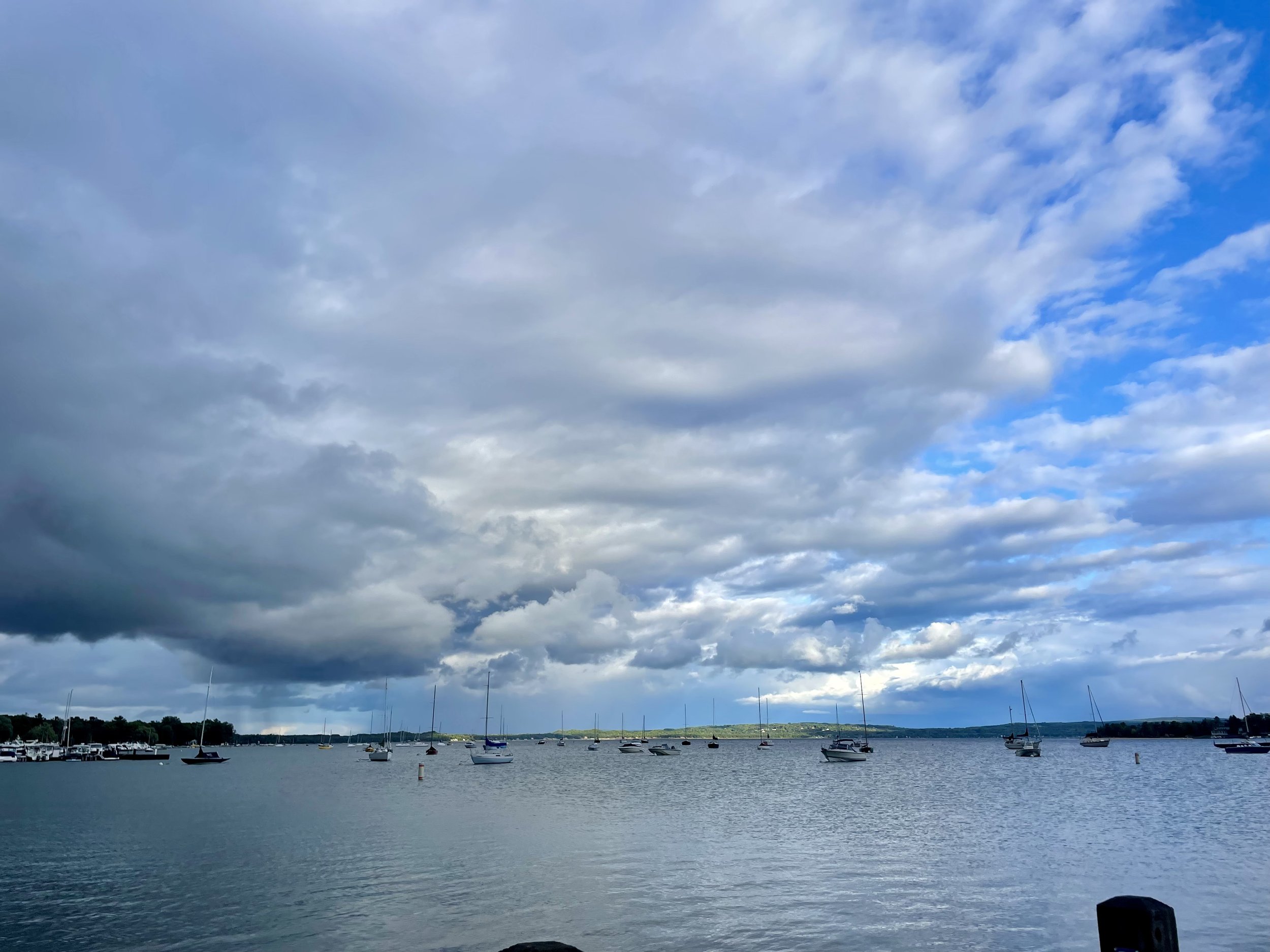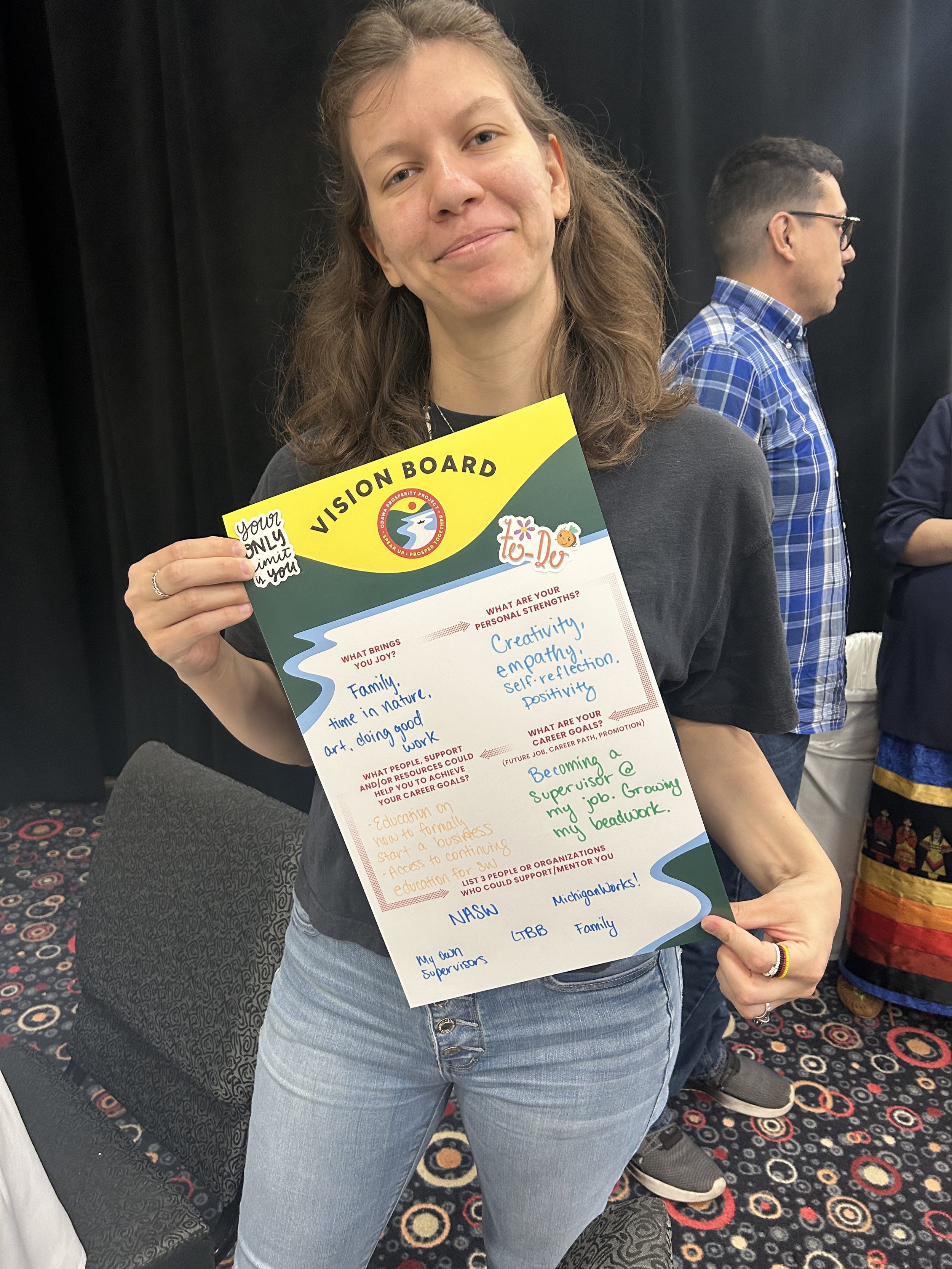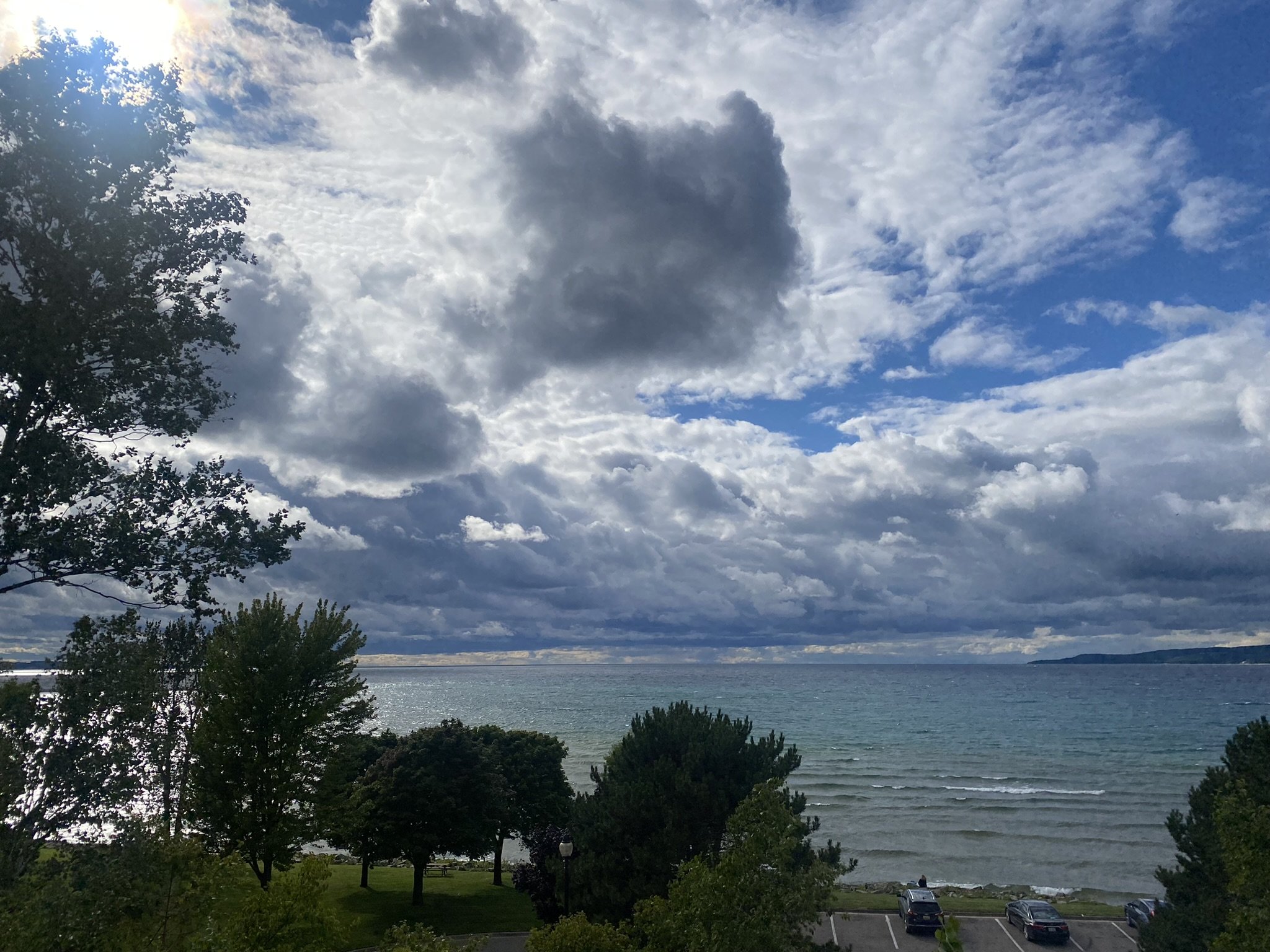CASE STUDY:
The Odawa Prosperity Project
Building economic sovereignty through culturally-rooted community engagement
In early 2023, the Little Traverse Bay Bands of Odawa Indians (LTBB) faced a complex challenge that many tribal communities know all too well—how do you build lasting economic independence while staying true to cultural values and ensuring every tribal citizen has a voice in shaping their community's future?
The Odawa Prosperity Project wasn't just another economic development plan. Funded by the US Department of Commerce Economic Development Administration, and led by SB Friedman, with support from Bryan Small and All Together, this ambitious, community-led initiative created a comprehensive Economic Diversification and Recovery Strategy that would support LTBB's economic independence, empower Tribal Citizen-owned businesses, and weave cultural and environmental stewardship principles into every strategic decision.
Through deep community engagement and collaborative strategy development, our team helped LTBB transform 1,347 individual voices into actionable strategies, proving that the most powerful economic development happens when communities lead their own transformation.
The outcome: A community that owns its economic strategy because they built it themselves.
Scenes from Harbor Springs, MI
The Challenge
The Little Traverse Bay Bands of Odawa Indians needed more than a traditional economic development plan. They needed to solve four interconnected problems:
Diversify the economy. Reduce dependency on limited revenue streams and build long-term resilience.
Balance competing needs. Individual citizens, entrepreneurs, and tribal leadership all had different priorities and economic realities.
Honor cultural values. Any strategy had to authentically integrate Anishinaabe principles—not as decoration, but as the foundation.
Rebuild trust. Previous planning efforts left community members feeling unheard. This time had to be different.
Community Engagement
Our Approach: Cultural Understanding Meets Strategic Planning
We designed a methodology rooted in cultural respect and authentic community engagement, recognizing that sustainable economic development must emerge from the community itself. This meant assembling a diverse consulting team that included both LTBB and Indigenous members, ensuring we had a strong cultural understanding from the outset.
Building Trust Through Cultural Competency
Our approach started with a fundamental question: How can we build trust and ask the community what the biggest economic opportunities are? This meant:
Learning about Anishinaabe cultural values and the Seven Grandfather Teachings before developing any engagement strategies
Using Anishinaabemowin language elements appropriately in branding and communications
Meeting people where they are, both geographically and culturally
Comprehensive Community Engagement Strategy
We implemented an intensive engagement process designed to reach Tribal Citizens across different demographics, locations, and comfort levels:
Pop-Up Engagement Series: Eight strategic pop-up events at locations where community members already gathered—from the casino to community centers—ensuring accessibility and comfort.
Deep-Dive Community Workshop: A comprehensive workshop that allowed for extended dialogue and collaborative planning with dedicated community stakeholders.
Pow-Wow Finale: A final engagement opportunity at the annual Pow-Wow, the community's largest gathering, ensuring broad participation and cultural relevance.
Comprehensive Census Outreach: Recognizing that many LTBB Citizens live outside the reservation area, we developed a multi-modal strategy for LTBB's very first Tribal Citizen census. LTBB engaged community ambassadors who made phone calls to spread awareness of the census, while offering both online and mail versions to ensure accessibility regardless of location or technology preferences.
Multi-Layered Research and Analysis
The project combined community voices with expert analysis through collaboration with three consulting firms, regional economic development authorities, and comprehensive data analysis—culminating in 1,347 LTBB Census responses that provided unprecedented insight into community needs and aspirations.

The Solution: 43 Strategies for Interconnected Prosperity
Our collaborative process identified that economic prosperity is an interconnected system that must work for individuals, entrepreneurs, and the Tribe collectively.
For Individuals and Families
Housing: Affordable options that support education and job security
Career paths: Clear routes to career opportunities and wealth-building
Community support: Health and connection systems that make everything else possible
For Entrepreneurs
Capital: Funding designed for tribal citizen businesses
Support: Practical help with business development
Networks: Peer mentorship and learning opportunities
For the Tribe as a Collective
Systems: Infrastructure for smart economic decisions
Transparency: Clear communication that builds community support
Cultural integration: Sovereignty through traditional principles
The Brand Story
The "Odawa Prosperity Project" brand needed to reflect both the community's cultural identity and their forward-looking economic vision. We developed messaging that honored Anishinaabe traditions while speaking to contemporary economic realities:
Rooted in the Seven Grandfather Teachings and guided by our connection to the water, the Odawa Prosperity Project represents our community's commitment to building economic independence that strengthens our sovereignty and supports every Tribal Citizen's path to prosperity.
The visual identity incorporated traditional elements with contemporary design, ensuring the brand could serve both internal community communications and external stakeholder engagement.
The Brand Elements
Our design approach balanced cultural authenticity with professional accessibility:
Typography and Color Palette: Elements that referenced traditional artistic patterns while maintaining readability in business contexts
Cultural Integration: Appropriate use of Anishinaabemowin terms and concepts without commodifying sacred elements
Flexible Applications: Materials that worked equally well in community pop-ups and formal government presentations
Community Ownership: Design elements that community members could easily recognize as authentically theirs
The Outcome: A Community-Owned Economic Future
The Odawa Prosperity Project accomplished what traditional economic development planning often struggles to achieve—it started from a place of intentionality around community feedback.
Multi-Level Impact Framework: Rather than focusing on a single economic indicator, the project created strategies that work simultaneously for individuals, entrepreneurs, and the Tribe as a whole.
Cultural Integration Success: The project demonstrated that economic development and cultural preservation aren't competing priorities—they're mutually reinforcing when approached thoughtfully.
Sustainable Engagement Model: The methodology we developed can be replicated for future community planning initiatives, ensuring ongoing community voice in tribal governance.
The Odawa Prosperity Project proves that the most effective economic development strategies emerge when communities are empowered to envision and create their own prosperous futures, rooted in cultural values and guided by authentic community engagement.












